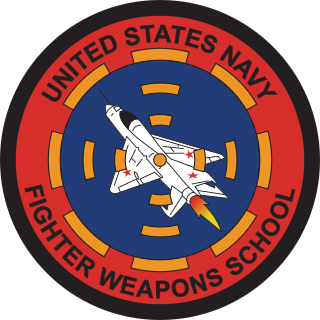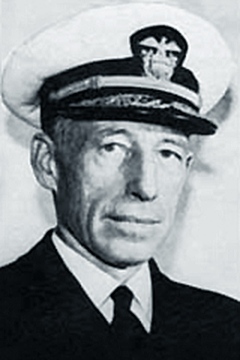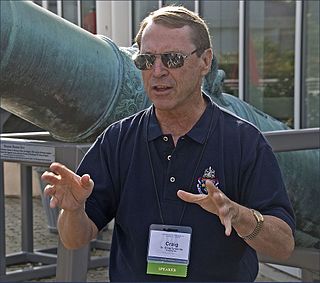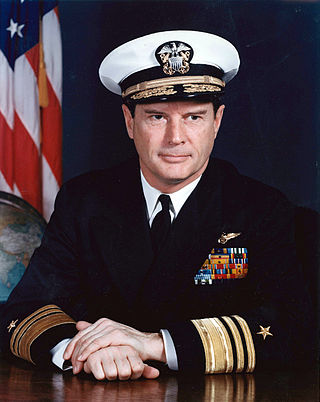Related Research Articles

The V-12 Navy College Training Program was designed to supplement the force of commissioned officers in the United States Navy during World War II. Between July 1, 1943, and June 30, 1946, more than 125,000 participants were enrolled in 131 colleges and universities in the United States. Numerous participants attended classes and lectures at their respective colleges and earned completion degrees for their studies. Some even returned from their naval obligations to earn a degree from the colleges where they were previously stationed.

Kenneth Sanborn Pitzer was an American physical and theoretical chemist, educator, and university president. He was described as "one of the most influential physical chemists of his era" whose work "spanned almost all of the important fields of physical chemistry: thermodynamics, statistical mechanics, molecular structure, quantum mechanics, spectroscopy, chemical bonding, relativistic chemical effects, properties of concentrated aqueous salt solutions, kinetics, and conformational analysis."

William Sowden Sims was an admiral in the United States Navy who fought during the late 19th and early 20th centuries to modernize the navy. During World War I, he commanded all United States naval forces operating in Europe. He also served twice as president of the Naval War College.

The United States Navy Strike Fighter Tactics Instructor program, more popularly known as Top Gun, is a United States Navy training program that teaches air combat maneuvering tactics and techniques to selected naval aviators and naval flight officers, who return to their operating units as surrogate instructors.
Samuel Nicholson was an officer in the Continental Navy during the American Revolutionary War and later in the United States Navy. Along with shipwright George Claghorn he oversaw the building of USS Constitution ("Old Ironsides"), and Nicholson was that ship's first commander.
Nathaniel Davis was a career diplomat who served in the United States Foreign Service for 36 years. His final years were spent teaching at Harvey Mudd College, one of the Claremont Colleges.

Carleton Herbert Wright was a rear admiral in the United States Navy (USN).

Craig Lee Symonds was the Distinguished Visiting Ernest J. King Professor of Maritime History for the academic years 2017–2020 at the U.S. Naval War College in Newport, Rhode Island. He is also Professor Emeritus at the U. S. Naval Academy, where he served as chairman of the history department. He is a distinguished historian of the American Civil War and maritime history. His book Lincoln and His Admirals received the Lincoln Prize. His book Neptune: The Allied Invasion of Europe and the D-Day Landings was the 2015 recipient of the Samuel Eliot Morison Award for Naval Literature.

Vincent Paul de Poix was a vice admiral in the United States Navy. He began his career as a naval aviator and fighting in World War II aboard USS Enterprise (CV-6). A graduate of the United States Naval Academy, he became the first captain of the newly commissioned USS Enterprise (CVN-65) in November 1961. He later participated in the Vietnam War, and commanded the United States Second Fleet. He was Director of the Defense Intelligence Agency from August 1972 to September 1974.
Lewis Stone "Bob" Sorley III is an American intelligence analyst and military historian. His books about the U.S. war in Vietnam, in which he served as an officer, have been highly influential in government circles.
Kenneth P. Miller is a professor of Government at Claremont McKenna College, specializing in state politics, policy, and law. Miller is the Director of the Rose Institute of State and Local Government, a research institute known for its expertise in redistricting, elections, demographic research, and public policy analysis. He has written extensively on state politics and policy, direct democracy, constitutional law, courts, and political polarization. He is a member of the California State Bar Association and the American Political Science Association. He has been a visiting scholar at Princeton University's James Madison Program in American Ideals and Institutions (2011-2012) and Southern Methodist University’s John Goodwin Tower Center for Public Policy and International Affairs (2017-2018).
Gatewood Sanders Lincoln was a United States Navy officer who served as the governor of American Samoa. With Nathan Woodworth Post, Lincoln was one of only two American Samoan governors to serve non-consecutive terms. He commanded a supply ship during World War I and was an instructor at the United States Naval Academy, serving as Department Head of the College of Electrical Engineering and Physics.
Robert Anthony Scalapino was an American political scientist particularly involved in East Asian studies. He was one of the founders and first chairman of the National Committee on United States – China Relations. Together with his co-author Chong-Sik Lee, he won the 1974 Woodrow Wilson Foundation Award for the best book on government, politics, or international affairs as awarded by the American Political Science Association. Scalapino's daughters include the artist Diane Sophia and poet Leslie Scalapino (1944–2010).
David Curtis Skaggs Jr., is an American historian of the Colonial and Early Republic periods, who spent nearly his entire academic career at Bowling Green State University in Bowling Green, Ohio.

Raymond D. Tarbuck was a rear admiral in the United States Navy who is best known as a planner with General Douglas MacArthur's General Headquarters (GHQ) Southwest Pacific Area during World War II.
Ira D. Gruber is an American author, bibliographer, and military historian of the American Revolution.
Donald J. Stoker is an American military historian.

Robin David Stewart Higham was a British-American historian, specializing in aerospace and military history, who also served as a pilot with the Royal Canadian Air Force during World War II.
Baigongguan (zh:白公馆) and Zhazidong (zh:渣滓洞) were Chinese concentration camps that opened in 1943 and were used by the Kuomintang (KMT) and the Sino-American Cooperative Organization (SACO) to gather intelligence about the Empire of Japan during the Second Sino-Japanese War. The camps were located in southwest China, in the Gele Mountains of Chongqing. In 1947, the camps were reopened by the Kuomintang to hold captured communist politicians of the Republic of China. After the People's Liberation Army started its advance on the area and threatened the liberation of the camps, General Dai Li of the Kuomintang authorized the camps to serve as the execution sites of the communist politicians in 1949.
References
- 1 2 3 "Curriculum Vitae: Kenneth J. Hagan". Archived from the original on 29 June 2015. Retrieved 9 January 2022.
{{cite web}}: CS1 maint: bot: original URL status unknown (link) - 1 2 3 "Kenneth J. Hagan". uchicago.edu. 17 June 2015. Retrieved 22 October 2015.
- ↑ Marquis Who's Who
- 1 2 "2015 Dudley W. Knox Medal Recipients", Pull Together, vol. 54, no. 3 (Summer 2015), p. A-5